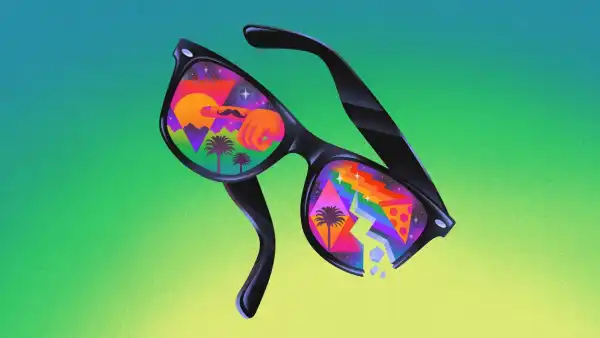
Save this storySave this storySave this storyYou’re reading Infinite Scroll , a weekly column by Kyle Chayka about how technology shapes culture.
In the summer of 2009, the ragtag Los Angeles band Edward Sharpe and the Magnetic Zeros released a single called “Home.” A romantic duet between founder and vocalist Alex Ebert and his bandmate and occasional girlfriend Jade Castrinos, the song sounded like a folk-music parody, with whistles, tambourine jingles, and lyrics like “Well, holy cow, I, oh my god / You’re the apple of my eye.” The song climbed the U.S. Billboard alternative charts, but more importantly, it left a mark on the American psyche, turning the band into a one-act wonder that encapsulated the vibe of an entire era. If you were living in Brooklyn at the time, in the crucible of the mustachioed, Mason jar-clutching, acoustic-guitar-strumming hipster Zeitgeist, the Magnetic Zeros were everywhere. By 2011, the track had appeared in commercials for the NFL, Microsoft, and Levi’s. Even Pitchfork, which gave the album the single appeared on a 4.1 out of 10, found “Home” worth listening to. While the economic fallout from the 2008 financial crisis was still fresh in our ears, the song offered an accessible vision of American domesticity. It inspired a desire to quit the hopeless job search and start a commune somewhere.
“Home” was a candid self-expression that was entirely of its time; there was no irony or self-awareness lurking beneath the band’s DIY, circus-like atmosphere. Ebert styled his hair like a cult leader, with a bushy beard and a side-swept mullet, and wore an unbuttoned white blazer over his bare chest. Castrinos’s voice was polished and naive, the sonically equivalent of a bob and polka-dot skirt worn at a Williamsburg dive bar. From the vantage point of today, when the cultural lingua franca leans toward incoherent, chronically online nihilism, it all feels foreign enough—which is why a clip of the band’s 2009 performance on NPR’s Tiny Desk concert series went viral last week. The video surfaced when children’s author Justin Boldagi shared it in response to a (now-deleted) X thread asking for “the worst songs of all time”; Boldagi captioned it tellingly: “Worst song of all time.” The post has already racked up nearly 100 million views and is causing millennials to succumb to bouts of introspection. Coming from a time before the relentless onslaught of social media, Trump politics, COVID-19, and artificial intelligence, the Magnetic Zeros’ pre-fall sincerity now looks disastrously carefree. For better or worse, the band members had no idea what was coming; they were almost innocent, inviting envy.
The video’s virality stems from both a revulsion against and an attraction to the artifacts and styles that are now known as millennial cringe. The revulsion stems both from this aura of oblivion and from the retrospective knowledge that the sincerity of late-2000s indie music was quickly swallowed up by a more commercial version of itself. Even in 2009, Edward Sharp and the Magnetic Zeros seemed cynical and trend-chasing compared to the likes of Sufjan Stevens or Arcade Fire; Ebert had previously fronted the electro-pop group Ima Robot, but turned to folk when that band failed. The Magnetic Zeros have become associated with “stomp-clap-hey” music, a term coined for the mid-20s folk revival practiced by bands like Mumford & Sons, Of Monsters and Men, and the Lumineers. (The Lumineers’ 2012 song “Ho Hey,” with its corny love lyrics and genuine braggadocio, is arguably worse than “Home.”) These bands have enjoyed far greater financial success than the Magnetic Zeros, and their music has provided a fitting soundtrack for the self-satisfied hipsterdom of the Great Recession, which gave way to the careerist hopes of the final Obama years, when Everlane minimalism supplanted lumberjack plaid suits.
That moment, too, has passed, replaced by our own ongoing era of political, economic, and technological polycrisis; Americana has come to be associated with resurgent nationalism and MAGA isolationism. Hence the enduring attraction to the rustic, raw emotion of Magnetic Zeros and the like. TikTok features montages of hipster imagery tagged #2010snostalgia, including one laudatory video of the summer of 2012, “when life felt like an indie film.” All the images are heavily filtered, like early Instagram, and everyone has bangs. One TikTok is simply a series of yellow photos taken at a Starbucks in 2010; it has nearly 150,000 likes. Millennial commenters express a desire to return to that era of their lives; younger users
Sourse: newyorker.com